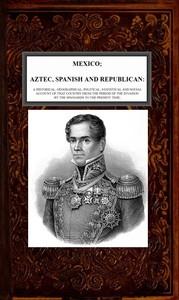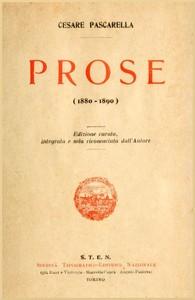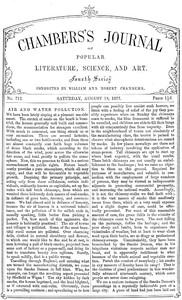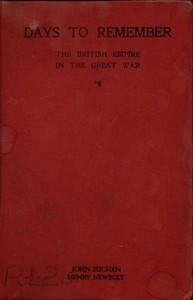Read this ebook for free! No credit card needed, absolutely nothing to pay.
Words: 143496 in 30 pages
This is an ebook sharing website. You can read the uploaded ebooks for free here. No credit cards needed, nothing to pay. If you want to own a digital copy of the ebook, or want to read offline with your favorite ebook-reader, then you can choose to buy and download the ebook.


: Mexico Aztec Spanish and Republican Vol. 2 of 2 A Historical Geographical Political Statistical and Social Account of that Country from the Period of the Invasion by the Spaniards to the Present Time. by Mayer Brantz - Mexico Description and travel; Mexic
, AND LIST OF PLATES.
Page
INTRODUCTION 1
Plates. ANTIENT TRADES.
MODERN TRADERS.
POSTSCRIPT, by the Editor 96
John Thomas Smith was the son of Nathaniel Smith, sculptor, and afterwards a well-known printseller, living at Rembrandt's Head, 18 Great May's-buildings, St. Martin's-lane; and we have his own authority, written in the album of Mr. Upcott of Upper Street, Islington, for stating, he was literally "born in a hackney coach, June 23, 1766, on its way from his uncle's old Ned Tarr, a wealthy glass-grinder, of Great Earl Street, Seven Dials, to his father's house in Great Portland-street, Oxford Street; whilst Maddox was balancing a straw at the Little Theatre in the Hay Market, and Marylebone Gardens re-echoed the melodious notes of the famed Tommy Lowe."
He was christened John, after his grandfather , and Thomas, after his great uncle Admiral Smith, better known under the appellation of "Tom of Ten Thousand" , and of whom Mr. Smith had a most excellent portrait painted by the celebrated Richard Wilson, the landscape painter, before that artist visited Rome, and of which there is a good engraving by Faber. The original Painting has lately been purchased by an honourable Admiral, to be presented by him to the Naval Gallery at Greenwich Hospital.
His father, Nathaniel Smith, was born in Eltham Palace, and was the playfellow of Joseph Nollekens, R.A. They both learned drawing together at William Shipley's school, then kept in the Strand, at the eastern corner of Castle-court, the house where the Society of Arts held its first meetings.
On the 7th August, 1755, Nathaniel Smith was placed with Roubiliac, and had the honour of working with him on some of the monuments in Westminster Abbey; Nollekens was put, in 1750, under the instruction of Scheemakers. These young sculptors, about 1759 and 1760, carried off some of the first and best prizes offered by the Society of Arts. Smith settled himself in Great Portland-street; and his friend Nollekens in Mortimer-street, Cavendish-square, where he resided till his death.
The friendship between Nollekens and Nath. Smith naturally introduced young Smith, the author of this work, to the notice of that celebrated sculptor. Whilst a boy, his intercourse with Nollekens was frequent, who often took him to walk with him in various parts of London, and seemed to feel a pleasure in pointing out curious remains and alterations of buildings to his notice, as well as shewing him some remarkable vestiges of former times. Perhaps these communications gave the first impetus to that love for metropolitan antiquities which he continued unabated through life. Upon the death of his mother in 1779, young Smith was invited into the studio of Mr. Nollekens, who had seen and approved of some of his attempts in wax-modelling. At that time Nathaniel Smith was Nollekens's principal assistant; and there his son was employed in making drawings from his models of monuments, assisting in casting, and finally, though with little talent, in carving. Whilst with Nollekens, young Smith often stood to him as a model, but left him after three years. He then became a student in the Royal Academy, and was celebrated for his pen and ink imitations of Rembrandt and Ostade's etchings; he copied several of the small pictures of Gainsborough, by whom he was kindly noticed. He afterwards was placed by his honoured friend Dr. Hinchliffe, then Bishop of Peterborough, as a pupil to John Keyse Sherwin, the celebrated engraver; but appears for a time to have given up the burin for the pencil, and was for many years a drawing master, and at one time resided at Edmonton. At the early age of 22 he married "the girl of his heart," Miss Anne Maria Pickett , who, after a union of 45 years, was left his widow.
The name of John Thomas Smith will descend to posterity connected with the Topographical History of the Metropolis. His first work, published in numbers, was entitled, "Antiquities of London and its Environs; dedicated to Sir James Winter Lake, Bart. F.S.A.; containing Views of Houses, Monuments, Statues, and other curious remains of antiquity, engraved from the original subjects, and from original drawings communicated by several members of the Society of Antiquaries." There was no letter-press description of these plates; but under the subjects were engraved copious "Remarks, and References to the Historical Works of Pennant, Lysons, Stow, Weever, Camden, and Maitland." The publication commenced in January 1791. About this period it became the fashion to illustrate with prints the pleasant "Account of London," by Mr. Pennant; and Mr. Smith's series of plates was a great acquisition to the collector. This work was ten years in progress, and finally consisted of twelve numbers and ninety-six plates; for a list of them, see Upcott's Bibliographical Account of English Topography, vol. ii. p. 886.
Free books android app tbrJar TBR JAR Read Free books online gutenberg
More posts by @FreeBooks


: Luonnosta ja elämästä: Satuja ja kertomuksia lapsille by Tolstoy Leo Graf - Russian literature Translations into Finnish






